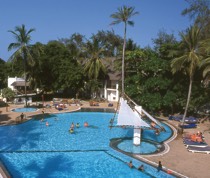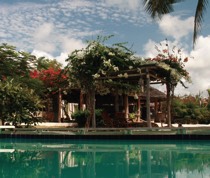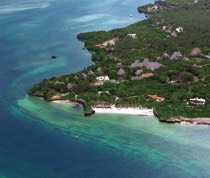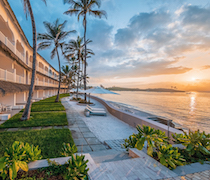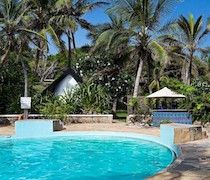Watamu
Stopping on my travels for a quick break in the lovely village of Watamu, I delved deep into the meaning of the name and discovered an altogether more nefarious connotation

Watamu means ‘sweet people’ in Swahili. While some see this as a tribute to the sweet nature of the folk here, there’s a darker possibility. It’s alleged that slave traders lured locals into their notorious slave ships with sweets. Certainly Gede, the ancient settlement at Watamu, was established during the days of the trade routes; the settlement originated in the twelfth century, when Arab dhows were ploughing up and down the east coast of Africa trading in leopard skins, tortoiseshells, rhino horns, ivory, gold and slaves.
Gede was abandoned in the seventeenth century, possibly because of attacks by bands of Turks, Ethiopians and Somalis, and possibly because the drop in the water table made water scarce. The crumbling houses, mosques and palaces have surrendered to the grasping fingers of the forest, and the site is now a picturesque fusion of ruins, roots and foliage. Now under the protection of the National Museums of Kenya, this archaeological site makes a scenic spot at which to wander, picnic and listen out for the echoes of history.
The Arabuko Sokoke Forest that has enfolded Gede in its embrace is the last remaining fragment of dry coastal forest in East and Southern Africa. Sprinkled with evocatively named sites like the Whistling Duck Pools and the Kararacha Pools, the forest is a vital habitat for endemic and endangered species of animals, birds and plants. With a network of walking trails, several viewpoints, tree platforms, picnic spots and campsites, the forest lends itself to vigorous activities, game spotting, bird watching, or the gentle contemplation of nature.
Along the southern fringe of the forest runs Mida Creek, a lovely inlet fringed with mangroves. It’s these mangroves that are responsible for the extraordinary numbers of fish species and bird species found here. Together with Arabuko Sokoke Forest, Mida Creek has been designated a UNESCO Biosphere Reserve. An enterprising group aptly named the Mida Creek Conservation Community has build a boardwalk out into the creek, at the end of which sits the Crab Shack. Possibly the most idyllic place to while away an evening, the Crab Shack offers views of the setting sun turning the water golden and serves a delectable array of seafood.
Despite this myriad of enticing attractions, what springs to mind first when one thinks of Watamu is its beach. Encased in a cove, the attractive white sands and sparkling seas attract people to them with an almost irresistible allure. Kite surfers ply the waves, sunbathers bask in the rays, and scuba divers are overwhelmed by the vast numbers of colourful fish, coral and sea creatures that live in this opulent portion of ocean. This season, the Watamu Marine National Park – known for turtles, dugongs and lush coral gardens – has recorded exceptional sightings of whale sharks and manta rays.
Easy though it would be for the people of this lovely destination to rest on their laurels and congratulation themselves for what they have, there are movers and shakers in this village who are determined to make the place better and better. The Watamu Marine Association in 2009 established the EcoWorld Enterprise Centre with the aim of turning trash into cash; their Blue Team – 25 members of the community employed to collect waste from the beach and beyond – has become an icon in the village. Now a leader in upcycling marine debris, the group is working with Flipflopi, the team with the ambitious project of creating a dhow entirely from plastic waste and sailing it from Kenya to South Africa. WMA has also created #DolphinDiaries which follows the daily events of the Watamu pod of 160 bottlenose dolphins. Upcoming events include the Marine Mammal Day, 24thFebruary, when the Kenya Wildlife Service will focus on Watamu and is encouraging people here to report dolphin and whale sightings; and Eyes to the Ocean, Easter Weekend, when everyone on the Kenya coast is requested to report sightings for a Kenya Marine Mammal Network database that will be used for conservation purposes.
Tamara Britten, 04 January 2019
Published also in: Coastal Footprints
About the region
North Coast
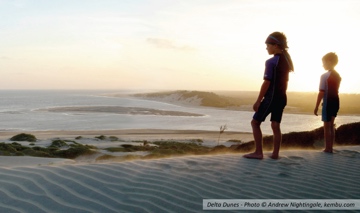
Stretching from Nyali to Malindi, the North Coast is known for its long white beaches, its trading history and its Swahili ruins. Highlights include Tana River Delta, Malindi Marine National Park, Watamu Marine National Park, Arabuko Sokoke Forest, Mida Creek and Gede Ruins.
Read more about North CoastWhere to stay
Turtle Bay Beach Club is set in 10 acres of manicured gardens on the edge of Watamu Marine National Park. Entitled the responsible resort, Turtle Bay has received a prestigious gold award from Ecotourism Kenya. The 89 super club rooms have a double and single bed; some ...
Manfriday’s Mida Creek is a collection of individually designed beach villas, located near the world bio-heritage Mida Creek. It combines the facilities of a hotel with the privacy of private villas. There are 4 villas, all elegantly furnished, fully equipped and fully staffed including private ...
Named after an ancient temple on the headland, Temple Point Resort is an attractive resort with an extensive selection of activities and facilities. The resort, set in lush gardens, covers the whole headland and has its own private beach. There are 106 en-suite rooms, made up ...
Hemingways Resort, a luxury tropical retreat, lies along the fringe of Watamu Marine National Park. Named for Ernest Hemingway, it recreates this famous author’s style and elegance. Hemingways has 2 accommodation wings, one each side of a central block which houses the bars, restaurant, reception, ...
In 1952, Ian Pritchard sailed into Watamu and set up a drinking hole on the beach which he named Ocean Sports. The original boat he sailed in still stands prominently in the bar, along with trophies from fishing grounds near the resort. To this day, Ocean ...
